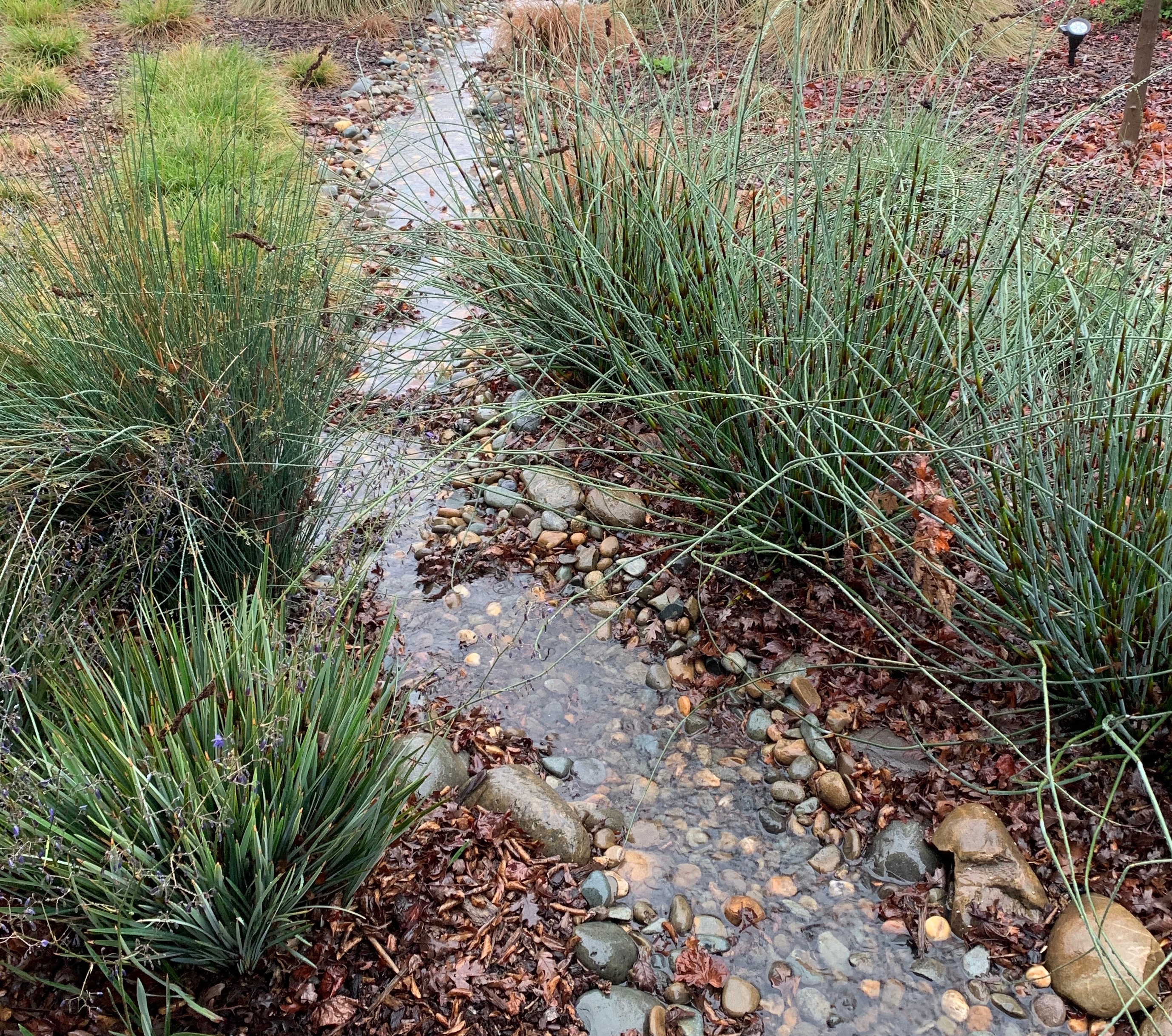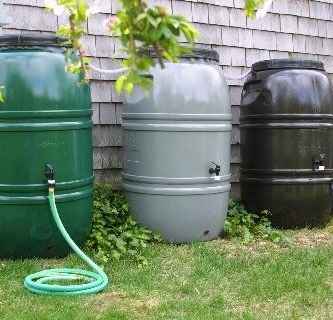Contractor direct rebate option san diego

RAIN-SAVING TO YARD
Reroute rainwater from your roof to your thirsty yard.
By simply redirecting your downspout onto your lawn or landscaped area, you can capture rainwater and use it to nourish your soil. This saves you money by reducing the amount of water you need to irrigate. It also prevents pollution from flowing into our beaches and streams.

How much is my rebate?
Up to $0.75/gallon stored, not to exceed the overall rain-saving cap of $2,100 for residential properties, and not to exceed $6,000 for commercial properties. An average residential home will capture 515 gallons for $385.
Calculate your rain harvest volume and start your application
What are the requirements?
VERY IMPORTANT: PROJECTS MUST NOT BE STARTED BEFORE APPLYING FOR AND RECEIVING APPROVAL TO PROCEED.
- Captured roof area must be at least 225 square feet.
- Landscaped area must be large enough to capture the minimum rain harvest volume for the relevant impervious area.
- Landscaped area must
- have less than 5% slope
- be at least 5 feet from any structure
- have perennial vegetation cover to prevent erosion of bare soil
- not be lined with landscaping fabric
- not be over a septic tank
- Project cannot create any erosion concerns.
- Runoff must be conveyed directly to the landscaped area via downspout, pipe, hose, or similar material. Water cannot free fall or free flow over pavement.
- Runoff cannot flow directly to neighboring properties.
- Rain-saving yard areas must be maintained for a minimum of 3 years.
- Projects must meet site-specific requirements identified by WRP staff during the rebate process.

RAIN-SAVING GARDENS
Help your yard soak up rainwater with gorgeous garden designs and dry creek features.
Installing a landscape feature underneath your downspout will help you collect water for plants to use later on, beautify your yard, and keep our local waterways clean.
Pick the feature that you like best — such as a rain garden, a rock garden, a dry riverbed or a bioswale — and make sure it’s large and deep enough to hold extra rainwater.

How much is my rebate?
Up to $2.25/gallon stored, not to exceed the overall rain-saving cap of $2,100 for residential properties, and not to exceed $6,000 for commercial properties. An average residential home will capture 515 gallons for $1,159.
Calculate your rain harvest volume and start your application
What are the requirements?
VERY IMPORTANT: PROJECTS MUST NOT BE STARTED BEFORE RECEIVING BOTH A SITE CONSULTATION AND NOTICE TO PROCEED.
- Captured roof area must be at least 225 square feet.
- Runoff must be conveyed directly to the rain-saving garden via downspout, pipe, hose, or similar material. Water cannot free fall or free flow over pavement.
- The rain-saving garden must be big enough to capture the minimum rain harvest volume for the relevant impervious area.
- Captured water must infiltrate into the ground within 72 hours.
- If the feature uses plants, they should be water-resistant, climate-appropriate plants.
- Invasive plants are not allowed.
- Native plants are preferred and offer significant additional benefits to homeowners.
- The bottom of the rain-saving garden is ideally flat and level.
- Mulch must be retained on property during large storms.
- Runoff cannot flow directly to neighboring properties.
- Overflow from the rain-saving garden must be directed to a non-eroding area that must
- have less than 5% slope
- be at least 5 feet from any structure
- have perennial vegetation cover to prevent erosion of bare soil
- not be lined with landscaping fabric
- not be over a septic tank
- Projects cannot create any erosion concerns. If the feature is located in an area with greater than 5% slope, it must feature erosion resistance measures such as rock lining and terracing.
- Rain-saving gardens must be maintained for a minimum of 3 years.
- Projects must meet site-specific requirements identified by WRP staff during the rebate process.

RAIN-SAVING CONTAINERS
Install a barrel or cistern to save rainwater for future use.
Another way to capture rainwater for future use is by placing a rain barrel or cistern under your downspout. Using a container allows you to actively choose what to do with the rainwater you capture. You can use it to water a nearby landscape or your houseplants. The overflow from these containers should empty onto your yard or a landscape feature to infiltrate the excess flow into the soil.
Learn more about rain-saving containers and watch an installation tutorial video on the Rain Barrel Information Page.
Depending on your needs, here are a few options:
1) New to Rain-Saving & looking to start with a rain barrel?
Rain barrels can capture up to 200 gallons of water. Purchase and install up to 2 rain barrels of your choice and get $65/barrel through SoCalWaterSmart.com
You may see a different rebate amount on our partner website — but don’t worry, if you live in unincorporated San Diego County, and get your water from a San Diego County Water Authority member agency, you'll still receive the amount noted here.
2) Want to go big with a cistern?
Cisterns that can capture anywhere from 200 to 1500 gallons. Apply at SoCalWaterSmart.com for a rebate of up to $450.
3) Need additional storage? The Waterscape Rebate Program can help with a Rain-Saving Container rebate! See below.

How much is my rebate?
Up to $0.75/ gallon stored, not to exceed the overall rain-saving cap of $2,100 for residential properties, and $6,000 for commercial properties.
Calculate your rain harvest volume and start your application
What are the requirements?
VERY IMPORTANT: PROJECTS MUST NOT BE STARTED BEFORE RECEIVING BOTH A SITE CONSULTATION AND NOTICE TO PROCEED.
- Captured roof area must be at least 225 square feet.
- Runoff must be conveyed directly to the container via downspout, pipe, hose, or similar material. Water cannot free fall or free flow over pavement.
- Inlets to the containers must have screens to prevent entrance of vectors or debris.
- Containers must not create a tipping safety hazard or structural concerns.
- All containers included in the project must have an overflow mechanism which directs the water to another container or an area that must
- have less than 5% slope
- be at least 5 feet from any structure
- have perennial vegetation cover to prevent erosion of bare soil
- not be lined with landscaping fabric
- not be over a septic tank
- The container overflow cannot flow to neighboring properties or structures.
- Containers must be maintained for a minimum of 5 years.
- Projects must meet site-specific requirements identified by WRP staff during the rebate process.
- Because there are additional rain barrel and cistern rebates from SoCalWater$mart.com, the Waterscape Rebate Program will help participants take advantage of both programs to earn the highest possible rebate for the project.
- SoCalWater$mart.com rebates will be deducted from the total rebate amount earned.
- If a participant has previously received a rebate from other programs, they are still eligible for the Waterscape Rebate Program rebates.

RAIN-SAVING GUTTERS
Install gutters to better manage rainwater in your yard.
Rain gutters perform many crucial functions for your landscaping. When you install them around your home, you can control where the rainwater drips off your roof — allowing you to irrigate your lawn sustainably.
When you don’t have a gutter, water flows against your home, leaving dirt and residue along your siding — which can cause mold growth, paint chipping, and deterioration of your exterior. To qualify for this rebate, you must connect your gutter to a landscape feature, container or yard. The Waterscape Rebate Program offers specific rebates to help with these too.
Installing a gutter helps keep your home looking amazing and helps you avoid problems later on.
How much is my rebate?
Residential Properties
$5 per linear foot of gutter installed, not to exceed $800, included in the rain-saving cap of $2,100.
Commercial Properties
$10 per linear foot of gutter installed, not to exceed $2,000, included in the rain-saving cap of $6,000.








